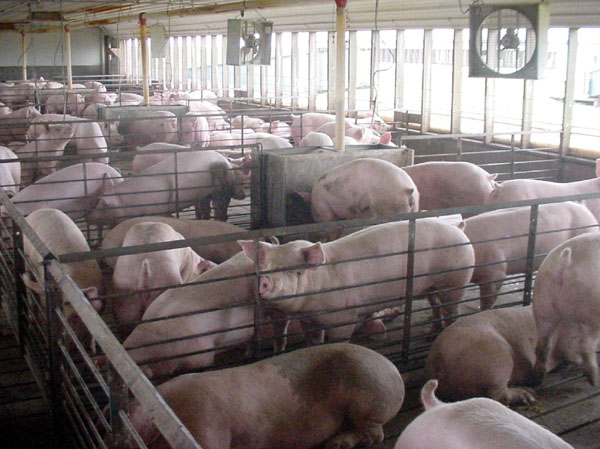Picture this: you’re driving down the highway and see a few huge, rectangle buildings with no windows all alone in a field. Maybe you even see a dark lagoon. You consider yourself an environmentally conscious person, but would you be able to recognize these as concentrated animal feeding operations, otherwise known as CAFOs?
CAFOs are drastically different from environmentally responsible farms and have highly negative effects on the environment and public health.
One of the quickest ways to differentiate a CAFO is noticing a giant, warehouse-style building in the middle of a field with no windows or fences. This building is where they keep all of their animals — the animals do not get to spend any time outside. They are kept in small, enclosed spaces with little to no walking room. A single CAFO contains at least 1,000 animal units. There is no current limit to how many animals a CAFO can hold. Due to this structure, a singular CAFO produces as much waste as a human city. The government does not currently have any regulations for treating animal waste like they do for human waste. As a result, the massive amounts of animal waste generated at CAFOs can impact water and air quality with disastrous health and environmental consequences.
There are several ways to tell an environmentally responsible farm from a CAFO. On the flip side, environmentally responsible farms have better ways of dealing with animal waste. The animals are allowed to roam around and graze, and when they produce waste, the animals can then integrate it into the farmland by continually walking over it.
Environmentally responsible farms usually have more diverse animals instead of just one type. They may also have freshwater bodies onsite instead of ‘waste lagoons’ that are common with CAFOs. It’s much more likely that you’ll see crops growing and animals visible in the fields. The farmer’s own house would typically be right next to the farmhouses. With the noise and stench of animal waste, a CAFO owner is unlikely to live beside their facilities
MCE advocates for greater regulation of CAFOs and their waste while supporting environmentally responsible farmers through our Known and Grown STL program. We also educate the public about food system changes and ways they can take action. For resources to learn more and educate others about CAFOs, you can go to our CAFO Toolkit or take action by signing up for our CAFO Action Network).

